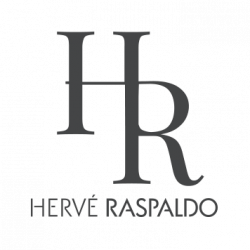Surgery of the nose: corrective rhinoplasty (or nose reshaping)
This article, written by Dr. Raspaldo and published on the website www.imaderm.ch, explains in detail what rhinoplasty consists in. Indeed, the patients frequently ask to have the shape of their nose corrected. From Cleopatra to Jennifer Aniston or Cyrano de Bergerac, the nose and its aesthetic appearance trigger passions without a fight. This cape, this peninsula, has been at the centre of many conversations! Dr. Hervé Raspaldo, Imaderm‘s face and neck specialised aesthetic surgeon, tells us everything we have always wanted to know about rhinoplasty, without ever daring to ask.
Dr. Raspaldo, when a patient wants to slightly modify or completely change the shape of his/her nose, which techniques do you recommend and how can one make a choice?
There are two different types of treatment: the first one is surgical, the second one is medical. Thanks to a three-dimensional technology specifically developed for the face, it is easier to determine the best option. For example, by rotating the image of the face in 3D on itself, we can record precisely the height of the bump of the nose. If the latter is too large, in other words, if the frontonasal line is too high (or if the nose is too long), injections should not be considered, at the risk of filling the frontonasal angle to the top of the eyebrows and, by doing so, to shape a too aquiline nose, similar to the one of the characters in the movie Avatar. In case of a flat and wide nose, the 3D images will determine if it is possible to create the illusion of a finer nose thanks to injections. The latter will shape a better drawn nose bridge. But if the nose is too wide, especially the tip, injections will not help making it look smaller. In this case, surgery will be more appropriate.
In case of medical rhinoplasty, what are the advantages?
The major advantage lies in the simplicity of the treatment, as there is no need to go to the operating room and no anaesthesia. Moreover, the procedure can be repeated because hyaluronic acid is a resorbable substance. The duration of the lifting effect varies from 12 to 18 months, depending on the type and dose of hyaluronic acid used. Over the time, the results always improve thanks to, among others, the production of natural collagen and fibroblasts. Finally, and this point is essential for the patients, injections are a first step, often useful when one is afraid of surgery and willing to postpone a surgical operation. Let’s precise that, after injections, a patient can always have (if wished) a surgical rhinoplasty.
What does the treatment consist in?
I have developed a technique called Eiffel Tower Nose-Lift®,with an obvious reference to the famous Eiffel Tower in Paris. This technique, first and foremost, consists in observing and redrawing the tip of the nose, by injecting hyaluronic acid to correct the nasolabial angle (the line between the nose and the lips). In a woman, this angle is comprised between 100° and 110°. From 90°, we talk about a “falling tip”. We inject hyaluronic acid at the base of the nose, which corresponds to the “first floor” of the Eiffel Tower. Thanks to this first intervention, we can find, step by step, floor by floor, the ideal position of the tip of the nose, by further injecting hyaluronic acid where needed. By doing so, we can get a harmonious profile, well balanced with the forehead, the chin and the lips. The procedure is painless and takes place at my medical office, without any trauma nor social eviction. And, at last, it is less costly than a surgical rhinoplasty.
So, what about surgical rhinoplasty?
These are performed in a clinic and require an operating room. Two different techniques currently exist. The first one is called “natural”. It lasts 1 hour on average and leaves no visible scar. Performed on an outpatient basis, the surgery takes place inside the nostrils. This method allows us to correct the imperfections of the nose and to get a natural, harmonious and artistic result, in perfect balance with the rest of the face. This flexible technique requires an excellent knowledge of the anatomy through the skin. With this surgical procedure, it is not necessary to “open the nose” to analyse and understand its imperfections (bones and cartilage). The secret is to imagine the structures under the skin and to visualise the corrections needed in order to get a result as harmonious as possible, without any devastating effect.
I also have realised many specific surgery operations called “ethnic rhinoplasty” on the nose of African, Asian, Indian or Middle-Eastern patients. I have developed a specific technique described in an article published several years ago in the journal of the ‘Société française de Chirurgie plastique et esthétique’ (French Society of Plastic and Aesthetic Surgery). This technique is ideal when the nose is very flared and flattened with large nostrils, among others. Knowing the physical and cultural specificities, as well as the canons of beauty of each and every one, is paramount to understand and to adapt to the origins and the cultural environment of the patient.
A second type of intervention, very old and revisited in the 1990’s, can also be considered. Performed externally with a scar, it consists in ‘uncovering’ the whole nose. Then, the surgeon removes cartilage and makes grafts to support the nose. The post-operative consequences are heavier than after a “natural” rhinoplasty and the procedure lasts between 2 to 4 hours. This technique is used especially in the case of cleft lips, if the patient had several previous nose surgery operations, when his/her nose shows too many bumps or if the nose is too badly injured after an accident. Rhinoplasty is a trend in some countries, but the operation should be considered cautiously and seriously, as its aftermaths are heavy. Ideally, it is recommended, if possible, to favour the “natural” method which is less traumatic and more flexible in terms of results.
Rhinoplasty is one of the aesthetic surgery operations which can be performed in Geneva, as well as other treatments: blepharoplasty, facelift, hyaluronic acid injections, etc.


